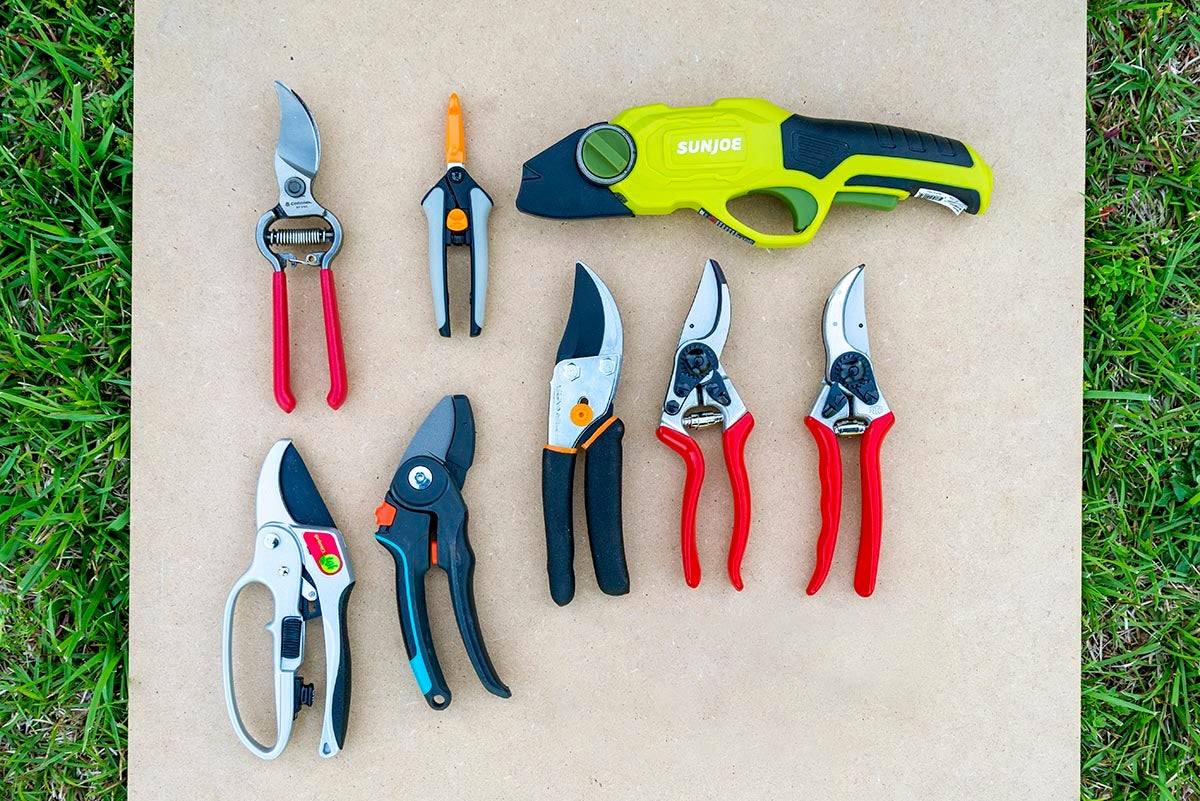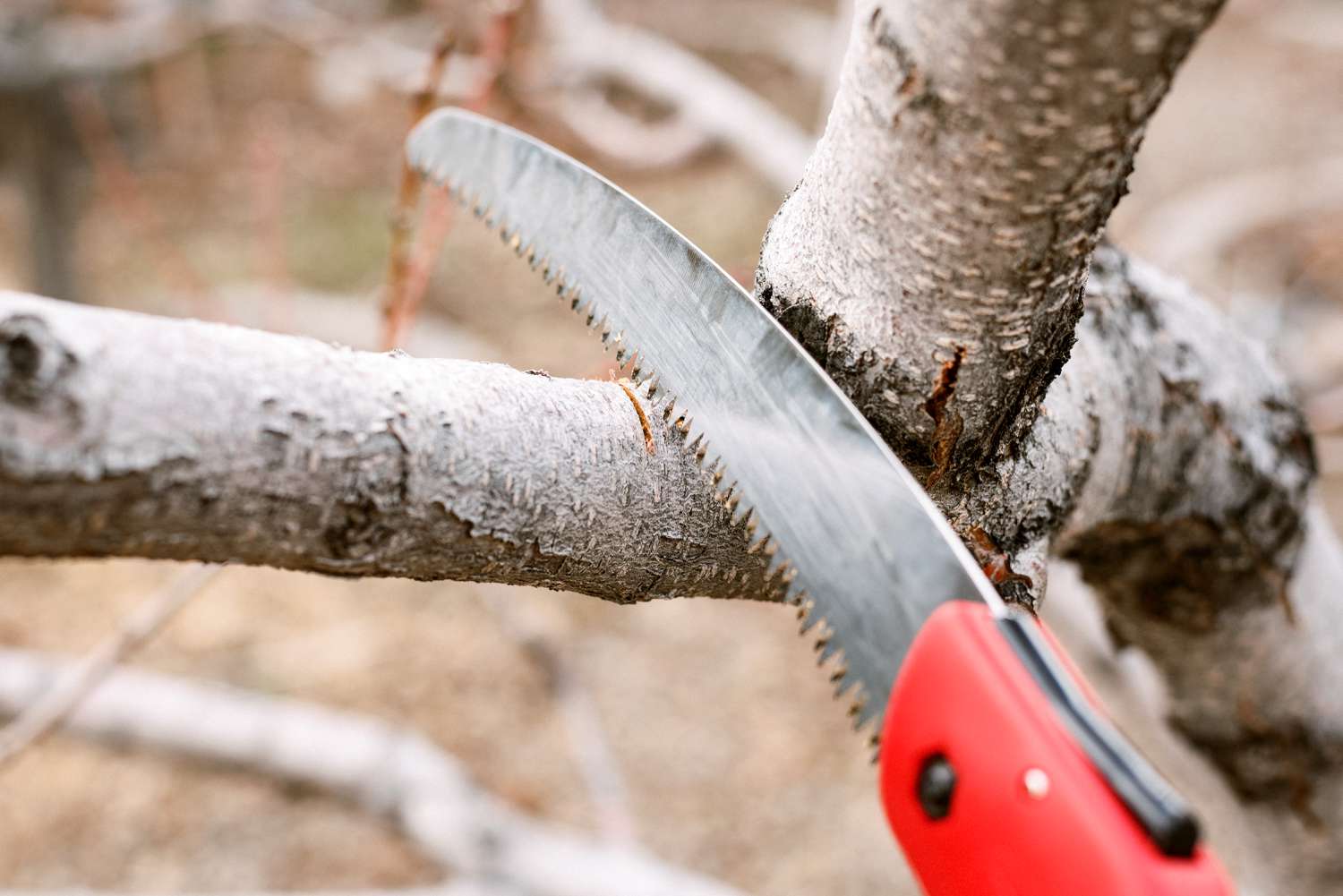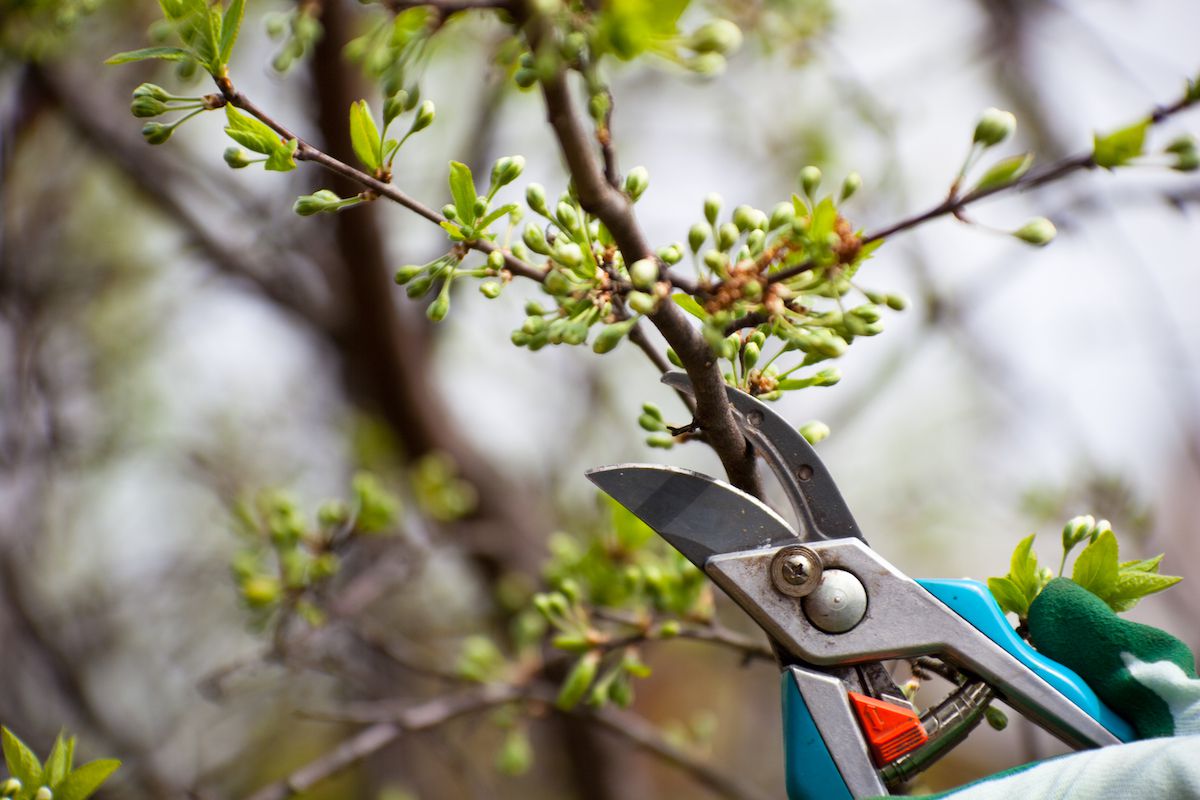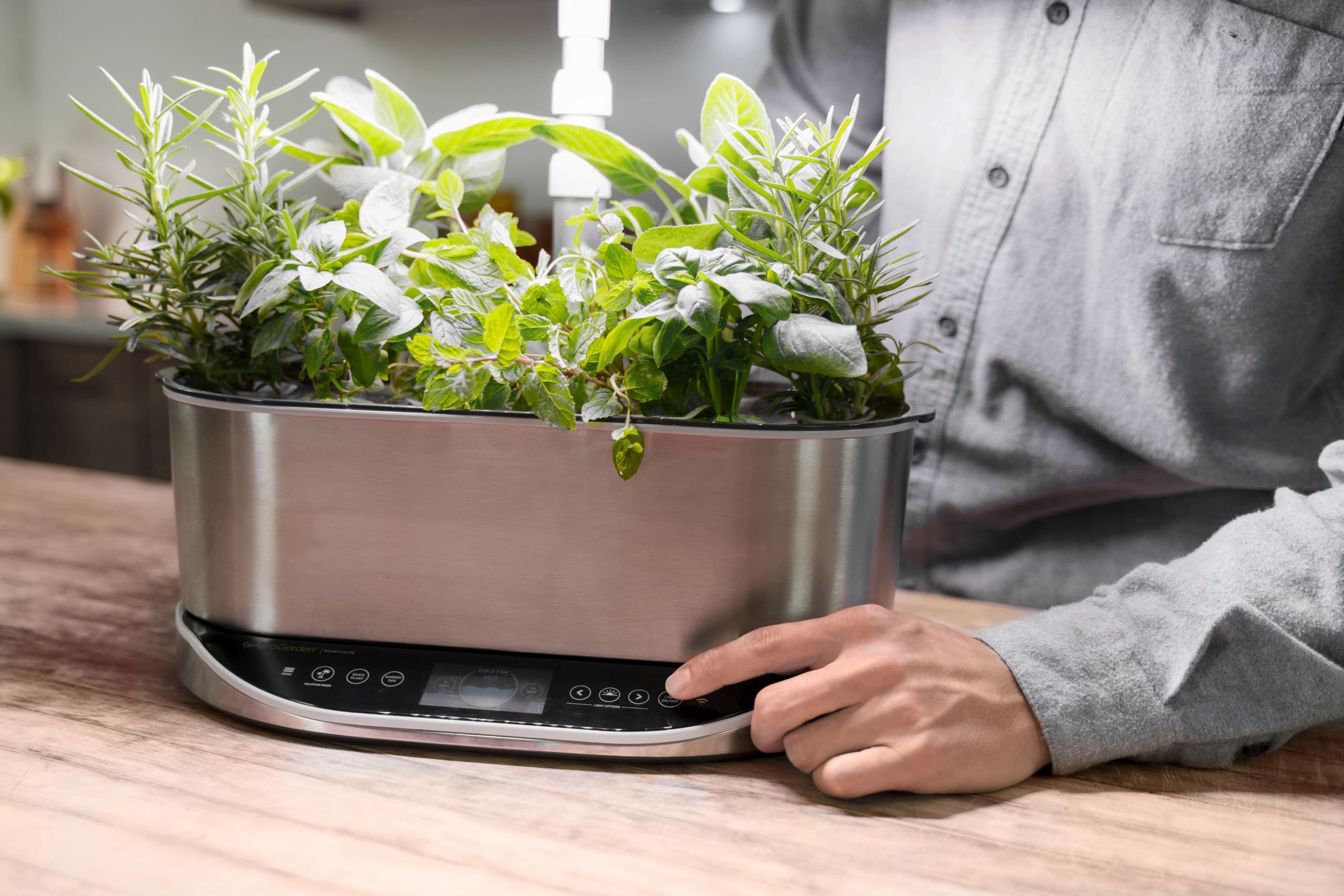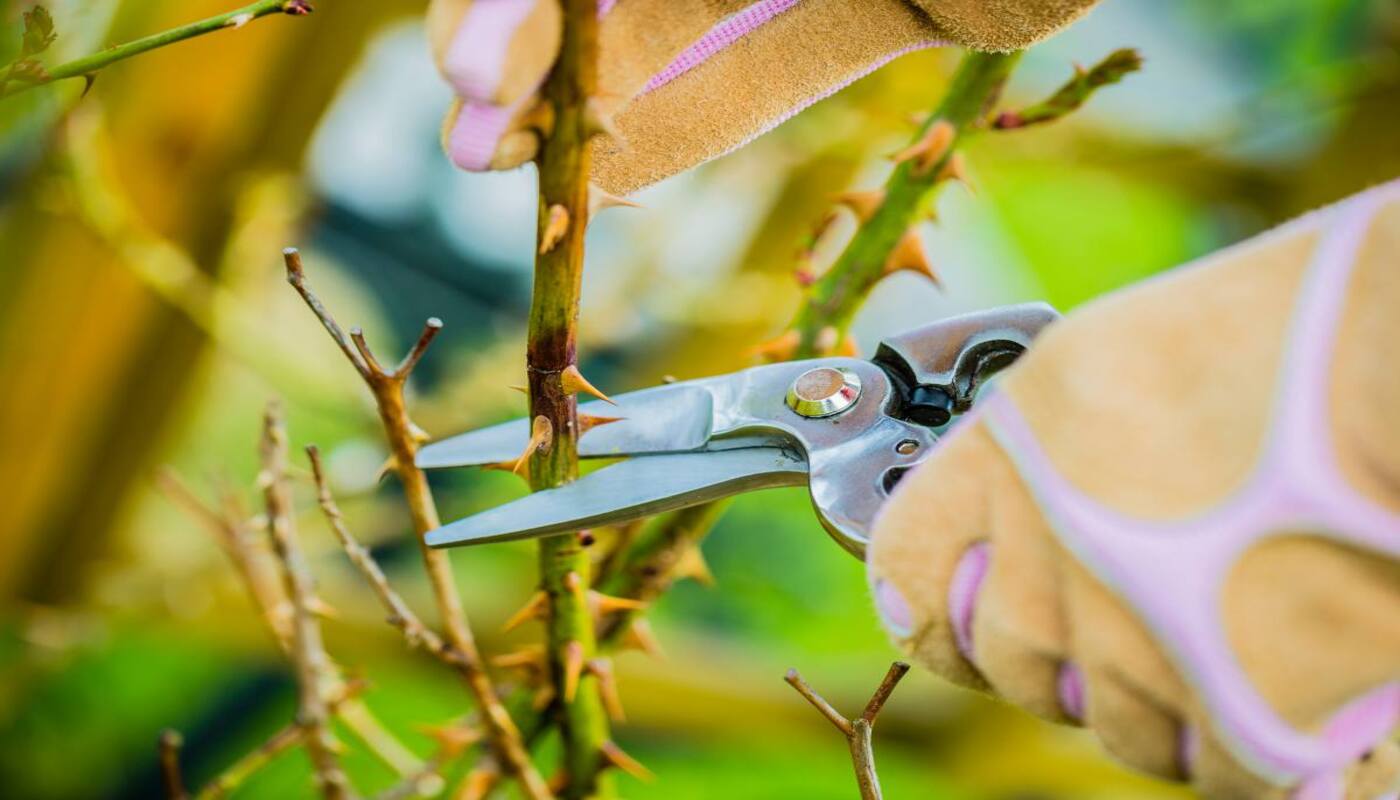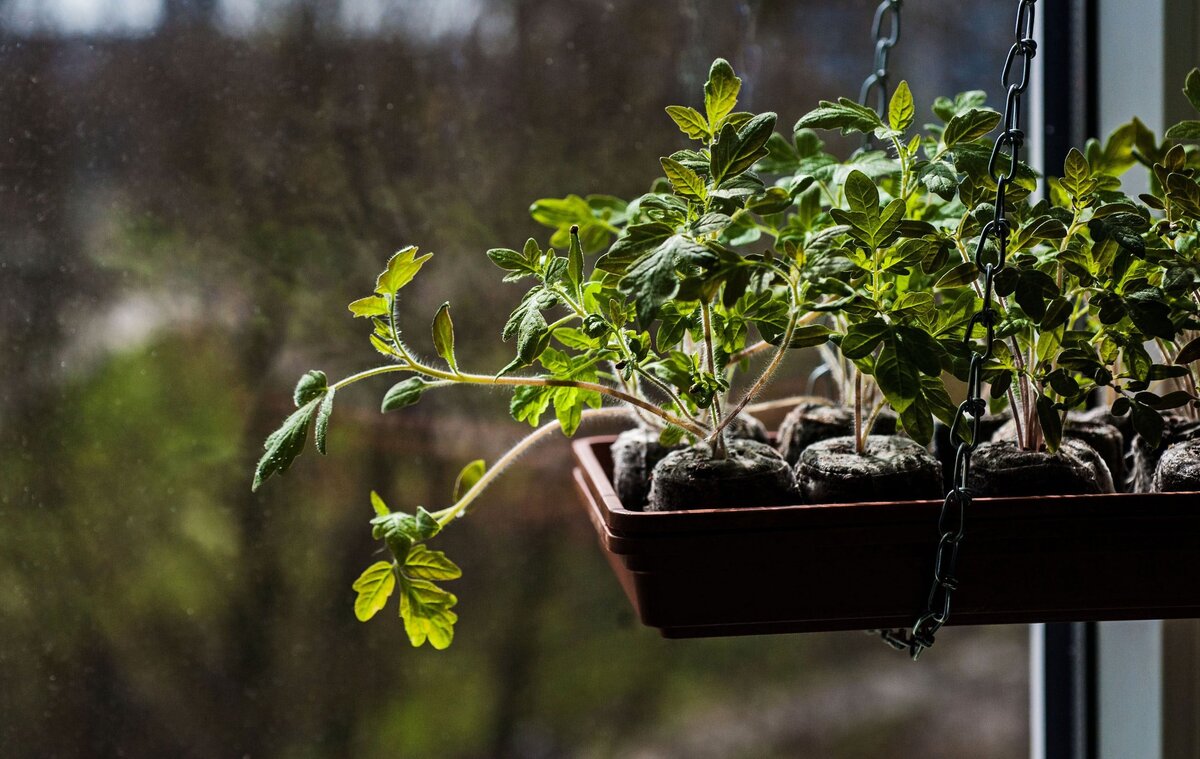Home>Gardening Techniques>Plant Care>What Does Pruning


Plant Care
What Does Pruning
Modified: January 22, 2024
Learn the importance of pruning in plant care and how it enhances growth, shapes the plant, and prevents disease. Discover pruning techniques to maintain a healthy garden.
(Many of the links in this article redirect to a specific reviewed product. Your purchase of these products through affiliate links helps to generate commission for Chicagolandgardening.com, at no extra cost. Learn more)
Table of Contents
Introduction
Welcome to the world of plant care, where pruning plays a vital role in promoting the health and beauty of your beloved plants. Pruning is a practice that involves the selective removal of certain parts of a plant, such as branches, stems, or leaves. While it may sound intimidating, pruning is actually a skill that can be easily mastered with a little knowledge and practice.
When done correctly, pruning can provide numerous benefits to your plants, including stimulating new growth, improving airflow and sunlight penetration, enhancing the overall shape and structure of the plant, and even preventing the spread of diseases. Whether you’re an avid gardener or a plant enthusiast, understanding the basics of pruning is crucial for maintaining the optimal health and appearance of your plants.
In this article, we will delve into the world of pruning and explore the different types of pruning techniques, the best time to prune, the essential tools you’ll need, and some valuable tips to ensure success. So grab your gardening gloves and let’s dive into the wonderful art of plant pruning!
What is Pruning?
Pruning is the process of selectively removing specific parts of a plant, such as branches, stems, or leaves. It is an essential practice in plant care that serves various purposes, including maintaining the health and aesthetics of the plant. By removing unwanted or diseased parts, pruning helps redirect the plant’s energy towards essential growth and development.
One of the primary objectives of pruning is to improve the overall structure and appearance of the plant. By selectively removing branches and stems, you can shape the plant to your desired form and encourage a more compact, balanced growth. Pruning also helps promote better airflow and sunlight penetration, reducing the risk of fungal diseases and improving photosynthesis.
Another important reason for pruning is to stimulate new growth. When you prune a plant, it triggers the production of hormones that promote the growth of new shoots and buds. This is particularly beneficial for flowering and fruiting plants as it can lead to increased blooms and yields.
Pruning also plays a crucial role in plant maintenance. By removing dead, damaged, or diseased branches, you can prevent the spread of infections and pests throughout the plant. Regular pruning can also help eliminate overcrowded areas, allowing better access to nutrients and reducing competition among plant parts.
It’s important to note that different plants require varying levels of pruning. Some plants, such as roses or fruit trees, may require frequent and more intensive pruning for optimal growth and productivity. On the other hand, certain houseplants or shrubs may only need occasional light pruning to maintain their shape and health.
Overall, pruning is a vital technique in plant care that promotes healthy growth, enhances the appearance of the plant, and helps prevent disease. By understanding the basic principles of pruning and applying the right techniques, you can ensure that your plants thrive and flourish for years to come.
Benefits of Pruning
Pruning offers a multitude of benefits for your plants, both in terms of their health and overall appearance. Here are some key advantages of incorporating regular pruning into your plant care routine:
- Promotes Health: Pruning helps to remove dead, damaged, or diseased branches, preventing the spread of infection and pests. By eliminating these troubled areas, you can enhance the plant’s overall health and vitality.
- Encourages New Growth: Pruning stimulates the growth of new shoots and buds, leading to increased branching and a fuller appearance. This is especially beneficial for fruit trees and flowering plants, as it can result in a greater yield of fruits or blooms.
- Improves Shape and Structure: By selectively removing branches, pruning allows you to shape the plant to your desired form. This can lead to a more attractive and balanced appearance, enhancing the visual appeal of your garden or indoor space.
- Enhances Airflow and Sunlight Penetration: Thinning out dense foliage through pruning promotes better airflow within the plant. This reduces the risk of fungal diseases and allows for improved light penetration, ensuring that all parts of the plant receive adequate sunlight for photosynthesis.
- Controls Size and Spread: Pruning can help manage the size and spread of your plants, particularly in smaller gardens or indoor spaces. By selectively removing branches, you can prevent overcrowding and maintain a more compact form.
- Revitalizes Older Plants: As plants age, they can become woody and lose their vigor. Pruning can help rejuvenate older plants by removing older, unproductive wood and encouraging new growth.
- Prevents Hazards: In some cases, overgrown branches can pose a safety risk, especially during storms or high winds. Pruning helps to eliminate these hazards, reducing the chances of branches falling and causing damage to your property or posing a danger to people walking below.
By regularly incorporating pruning into your plant care routine, you can unlock these benefits and promote the overall well-being and beauty of your plants. However, it’s important to learn the proper techniques and timing for pruning different types of plants to ensure optimal results.
Types of Pruning
Pruning involves different techniques and methods, each serving a specific purpose in maintaining the health, shape, and productivity of plants. Here are some of the common types of pruning:
- Deadheading: Deadheading refers to the removal of spent flowers from plants. By snipping off the faded flowers, it encourages the plant to redirect energy towards producing new blooms, resulting in a longer flowering period and a tidier appearance.
- Thinning: Thinning pruning involves selectively removing branches or stems to reduce the density of the plant. This helps improve airflow, increases sunlight penetration, and reduces the risk of fungal diseases. Thinning is commonly done on trees and shrubs with dense foliage.
- Crown Cleaning: Crown cleaning is the removal of dead, dying, or diseased branches from the canopy or crown of a tree. This type of pruning is crucial for maintaining the health and safety of the tree, as it eliminates potential hazards and allows for better light penetration.
- Canopy Elevation: Canopy elevation refers to raising the lower branches of a tree to increase clearance beneath the tree. This type of pruning is often done to prevent interference with pedestrians, vehicles, or structures and to improve the visibility around the tree.
- Crown Reduction: Crown reduction pruning involves selectively removing branches at the top or sides of a tree to reduce the overall size or to reshape the crown. This type of pruning is done to control the size of the tree, prevent it from interfering with overhead powerlines, or to address structural issues.
- Training and Espalier: Training and espalier pruning techniques involve guiding the growth of plants to create specific shapes or forms. This is commonly done with fruit trees or certain ornamental plants to maximize space utilization or create decorative patterns against walls or fences.
It’s important to note that different plants have different pruning needs and tolerances, so it’s essential to research and understand the specific requirements of each plant in your care. Additionally, pruning cuts should be made at the correct angle and distance from the branch collar to promote proper healing and minimize the risk of disease entry.
By familiarizing yourself with the various types of pruning, you’ll be equipped with the knowledge to apply the appropriate techniques to your plants, ensuring their health, beauty, and longevity.
Pruning Techniques
Pruning techniques involve precise and strategic cuts to achieve desired outcomes while ensuring the health of the plant. Here are some common pruning techniques used in plant care:
- Heading: Heading involves cutting back the tips of branches to encourage bushier growth and promote the development of lateral branches. This technique is commonly used for shaping hedges or maintaining compact shapes in shrubs.
- Thinning: Thinning is the removal of entire branches or selective cutting of lateral branches. This technique helps in reducing density, improving airflow, and allowing sunlight to reach inner parts of the plant. Thinning is often used on trees, shrubs, and overgrown plants.
- Pollarding: Pollarding is a severe pruning technique where all the branches of a tree are removed to the trunk or main stem. This technique is typically used for certain tree species to control their size and encourage the growth of new shoots, resulting in a distinctive multi-stemmed appearance.
- Pinching: Pinching involves using your fingers or pruners to remove the growing tips of young shoots. This technique is commonly used on herbs, annuals, and indoor plants to promote branching, control height, and prevent legginess.
- Renewal Pruning: Renewal pruning is performed to rejuvenate older plants by removing older branches completely or cutting them back to the ground. This technique encourages the plant to produce new, healthy shoots and revitalizes the overall plant structure. It is often used for shrubs and climbers that become woody over time.
- Production Pruning: Production pruning is specifically employed in fruit-bearing plants to maximize their productivity. It involves the removal of certain branches to promote better fruit development, enhance airflow, and facilitate easy harvesting.
When employing pruning techniques, it’s crucial to make clean and precise cuts. Use sharp, sterile pruning tools to minimize the risk of introducing diseases or causing unnecessary damage to the plant. Ensure that you angle your cuts properly, just above a bud or node, and avoid leaving stubs or cutting too close to the base of the plant.
Remember to consider the specific needs and characteristics of the plant before applying any pruning technique. Different plants may respond differently to various techniques, so it’s essential to research and follow the appropriate guidelines for each plant in your garden or indoor space.
When to Prune
Timing plays a crucial role in successful pruning. The optimal time to prune depends on the type of plant, its growth habits, and the desired outcome. Here are some general guidelines to help you determine when to prune:
- Spring Pruning: Many plants benefit from pruning in early spring before new growth begins. This includes deciduous trees and shrubs, roses, and dormant fruit trees. Pruning in spring allows the plant to heal quickly and stimulates vigorous growth throughout the growing season.
- Summer Pruning: Summer pruning is often done on plants that produce flowers on new growth, such as many types of shrubs and certain fruit trees. By pruning in summer, you can shape the plant, remove dead or diseased branches, and promote the growth of new flowering stems.
- Autumn Pruning: Some plants, including late-flowering shrubs, can be pruned in autumn after they have stopped blooming. Pruning in autumn helps maintain their shape and prevents overgrowth during the dormant season.
- Winter Pruning: Pruning in winter is typically done on deciduous trees and shrubs when they are in their dormant phase. With the absence of leaves, winter pruning allows for better visibility of the plant’s structure and makes it easier to identify and remove any diseased or crossing branches.
- Specific Timing: Certain plants have specific pruning requirements based on their growth patterns. For example, spring-flowering shrubs, such as forsythia and lilacs, should be pruned right after they have finished blooming to avoid cutting off developing flower buds for the next year.
It’s important to note that not all plants require regular pruning, and some may have specific pruning recommendations based on their unique characteristics. It’s best to research the specific pruning needs of each plant in your care or consult with local gardening resources for region-specific recommendations.
Lastly, it’s advisable to avoid pruning during periods of extreme weather conditions, such as heatwaves or freezing temperatures, as this can add additional stress to plants. Pruning during the early morning or late afternoon, when temperatures are cooler, can help minimize stress on the plant as well.
By understanding the appropriate timing for pruning, you can help promote healthy growth, maximize flowering or fruiting potential, and maintain the overall beauty of your plants.
Tools for Pruning
Having the right tools for pruning is essential to ensure clean and precise cuts, minimize damage to plants, and maintain the health of your gardening equipment. Here are some common pruning tools to have in your arsenal:
- Pruning Shears: Also known as hand pruners or secateurs, pruning shears are a must-have tool for any gardener. They are designed for cutting small branches, stems, and twigs. Look for shears with a bypass or anvil cutting mechanism, and choose a size that fits comfortably in your hand.
- Loppers: Loppers have long handles and are ideal for cutting thicker branches that are out of reach of pruning shears. They provide extra leverage and make it easier to prune branches up to an inch or more in diameter.
- Pruning Saw: A pruning saw is useful for larger branches or when cutting in tight spaces. Look for a saw with a curved blade and sharp teeth designed specifically for pruning. Some pruning saws have folding blades, making them more convenient and safe to carry.
- Hedge Shears: Hedge shears are used for shaping and trimming hedges or shrubs. They have longer blades than pruning shears and feature serrated edges to grip and cut through thicker foliage. Look for hedge shears with comfortable handles and adjustable tension.
- Pole Pruner: A pole pruner is a long, extendable tool with a cutting head at the end. It is used for reaching and pruning high tree branches without the need for a ladder. Some pole pruners come with a saw attachment for cutting thicker branches.
- Pruning Sealant: Pruning sealant is a protective coating applied to pruning cuts to help prevent disease entry and promote healing. Look for a sealant that allows the wound to breathe while providing a waterproof barrier.
- Gloves: A good pair of gardening gloves is essential to protect your hands from thorns, sharp edges, and sap. Opt for gloves that provide a combination of durability, dexterity, and comfort.
- Safety Gear: Depending on the pruning task, it may be necessary to wear safety gear such as safety glasses or goggles to protect your eyes, and sturdy footwear to prevent injuries from falling branches or tools.
Before using any pruning tool, make sure they are clean and sharp. Dull blades can cause crushing instead of clean cuts, which can lead to disease entry and slower healing. Clean your tools after each use to prevent the spread of diseases and oil them regularly to prevent rust.
Investing in high-quality pruning tools and taking proper care of them will make your pruning tasks more efficient and ensure the health and beauty of your plants.
Pruning Tips and Precautions
Pruning is a valuable skill in plant care, but it’s important to approach it with care and precision to avoid causing harm to your plants. Here are some tips and precautions to keep in mind when pruning:
- Prune with Purpose: Have a clear objective in mind before you start pruning. Whether it’s shaping the plant, removing dead or diseased branches, or promoting new growth, understanding your purpose will guide you in making the right cuts.
- Know Your Plant: Familiarize yourself with the specific pruning needs of each plant in your garden. Some plants have unique growth habits, flowering patterns, or sensitivities that require specific pruning techniques or timings.
- Use Clean and Sharp Tools: Always use clean and sharp pruning tools to make clean cuts. Sterilize your tools with rubbing alcohol or a bleach solution to prevent the spread of diseases between plants.
- Start Small: If you’re new to pruning, start with smaller and less complex plants before tackling larger or more established ones. Gain confidence and experience before moving on to more advanced pruning tasks.
- Prune Conservatively: Avoid excessive or unnecessary pruning, as this can weaken the plant and disrupt its natural growth patterns. Never prune more than one-third of a plant’s growth in a single pruning session.
- Watch for Signs: Observe your plants for signs of growth, flowering, or disease before pruning. Wait until after flowering for plants that bloom on old wood, or until the dormant season for trees and shrubs that benefit from winter pruning.
- Make Clean Cuts: When making pruning cuts, angle them properly just above a bud or branch collar. Avoid leaving stubs, as they can be prone to disease and slow healing. Don’t cut too close to the main stem or trunk, as it can lead to damage.
- Prune Sick or Damaged Branches: Remove any dead, diseased, or damaged branches as soon as you notice them. Pruning them promptly can prevent the spread of disease and protect the overall health of the plant.
- Take Safety Precautions: Wear appropriate safety gear, such as gloves and safety glasses, when pruning. Be mindful of your surroundings, especially when using tools above shoulder height or near power lines.
- Monitor and Adjust: Regularly monitor the growth of your plants after pruning. Observe how they respond and adjust your pruning techniques or timing accordingly for future pruning sessions.
Remember, not all plants require regular pruning, so it’s essential to research and understand the specific needs of each plant in your care. By following these pruning tips and precautions, you can maintain the health, shape, and beauty of your plants while minimizing the risk of damage or disease.
Conclusion
Pruning is a fundamental practice in plant care that promotes the health, aesthetics, and productivity of your beloved plants. By selectively removing branches, stems, or leaves, you can shape the plant, stimulate new growth, improve airflow, and prevent the spread of diseases. However, it’s important to approach pruning with knowledge, patience, and the right tools.
Throughout this article, we have explored the various aspects of pruning, including its definition, benefits, different types, techniques, timing, and the essential tools needed. Understanding these principles empowers you to make informed decisions and confident cuts when tending to your plants.
Remember, when pruning, have a clear purpose in mind and consider the specific needs of each plant. Use clean and sharp tools to make precise cuts, and always prioritize the health and natural growth patterns of your plants. Prune conservatively, monitor the response of your plants after pruning, and make adjustments as necessary in future sessions.
By practicing proper pruning techniques, you can promote healthier plants, improve the appearance of your garden or indoor space, and maximize yields of fruits or blooms. Just remember to approach pruning with care, continually learn, and adapt your techniques to suit the unique needs of your plants.
So go ahead, put on your gloves, grab your pruning shears, and embark on the rewarding journey of pruning. Your plants will thank you with their renewed vigor, beauty, and abundant growth.
